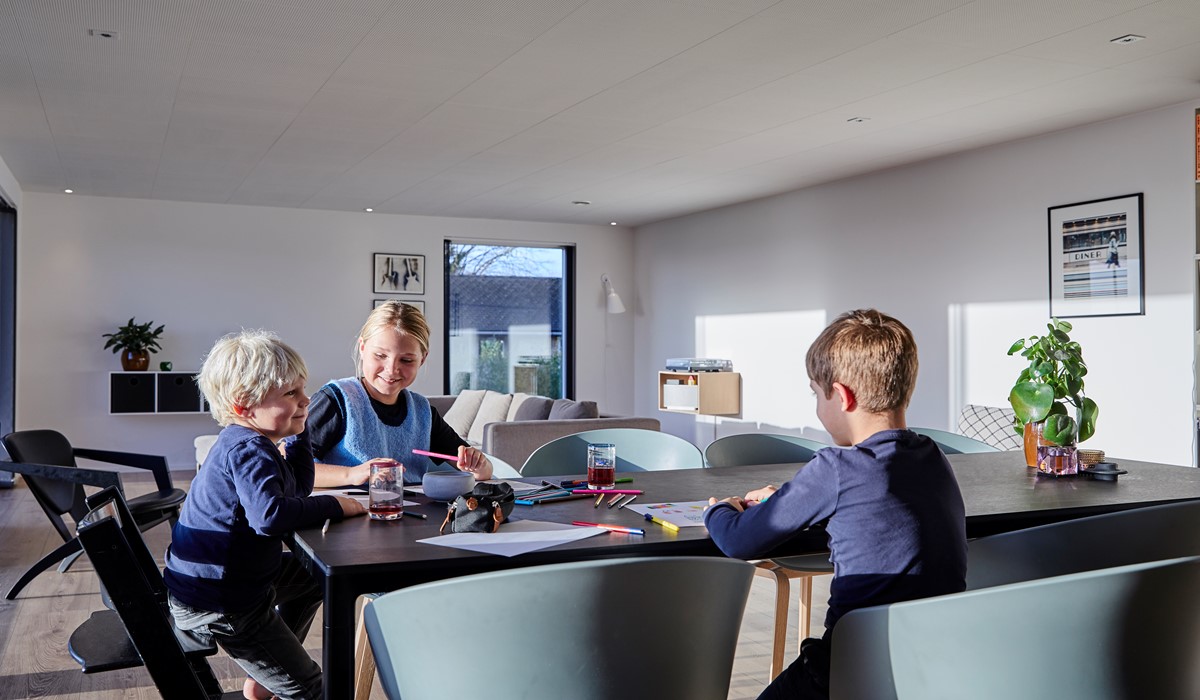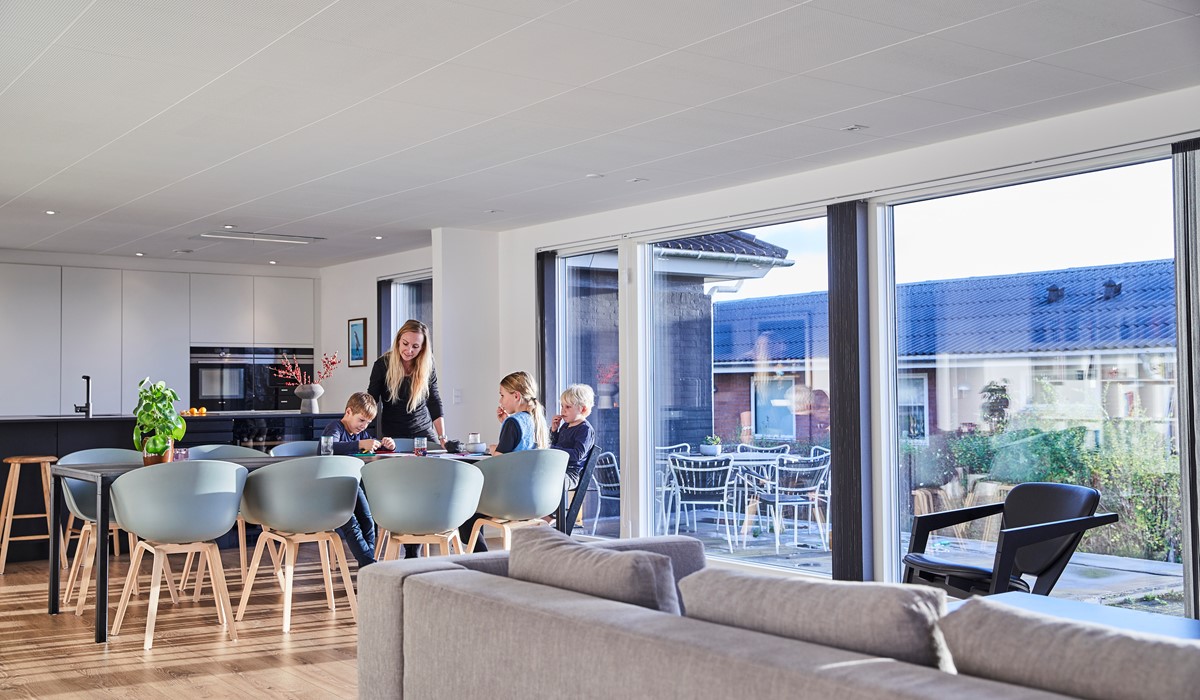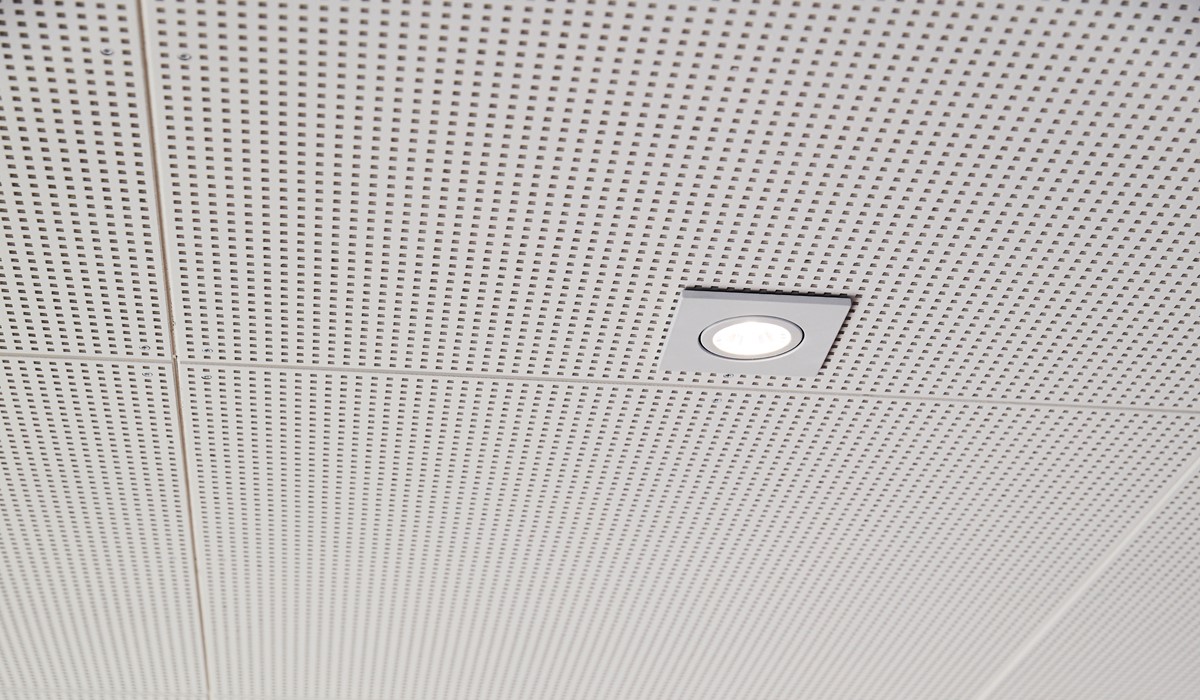As humans, we all understand the importance of privacy. Whether at an office or home, we desire a peaceful environment where we can feel safe and comfortable. Sound is a big part of it. Excessive noise and lack of acoustic privacy disrupt our daily rhythm and damage our ears and well-being. Sound and privacy are closely related in architectural design because poor acoustics compromise privacy. At the same time, designing buildings with acoustics and acoustic privacy in mind is more than muting sound into silence.
The Sound of Silence: Privacy in Acoustic Design

Good acoustics is more than sound absorption
Architects put a lot of focus on sound absorption, and with good reason. Sound absorbers help absorb sound waves, thereby controlling noise levels. High-quality sound absorbers are essential to good acoustics, but absorption value is not the only factor in measuring their effectiveness.
Other elements must be considered, such as reverberation and sound diffusion properties. Materials with diverse acoustic properties have a better chance to reduce echo and effectively shorten reverberation time within a space. This creates a pleasant acoustic environment and helps preserve privacy by diffusing sound and reducing the noise transmitted from one area to another.
Why acoustic privacy is about freedom
Acoustic privacy can be seen as a two-dimensional concept manifesting as freedom from intrusive noise and freedom to have speech privacy. The latter represents a person’s right to maintain privacy in their daily interactions at home or work.
Intrusive noise refers to any unwelcome sounds disrupting a person’s comfort and privacy in a particular space. At home, intrusive noise could be someone snoring, loud steps upstairs or children running around. At the office, the noise could be caused by an HVAC system, the janitor fixing a lamp or colleagues chattering about while others are trying to work.

The Sound of Life: learn more about acoustic design
In this ebook, you can dive deeper into how acoustics affect our everyday lives no matter where we spend our time: at home, at work or at school. Learn how important it is to consider the acoustic properties of the materials you choose to install, and how you can ensure the optimal design from the beginning of the design phase.
The challenge of acoustic privacy in shared spaces
Open offices do not appear to lose their appeal just yet, but the questions of how this design affects sound quality and acoustic privacy are raised more often. Architects are challenged with finding new ways to manage noise. Acoustic privacy is essential for confidential phone calls, information-sensitive HR meetings, or simply working in peace.
Shared spaces are becoming more common at home as well. Open-floor houses and kitchen-dining rooms, in particular, are creating acoustic challenges previously not experienced in private homes. 15-20% of the people living in houses are annoyed by noise. A kitchen, a dining room and a living room in one combine several activities with varying degrees of noise to be contained in corresponding areas.
The minimalist trend exacerbates the issue because minimalistic interiors tend to have heigh ceilings, less furniture and more hard surfaces, such as large windows or glass sections, that reflect sound back into the room. To address this, architects increasingly use acoustic ceilings and walls in their designs to reduce noise levels.
Acoustic design in a private home in Denmark: Noise-reducing minimalistic ceilings
After a major renovation of their private home, including a brand-new acoustic design based on perforated gypsum tiles, the Olesen family created a calm and relaxing atmosphere in their private residence in Aalborg, Denmark.
The challenge: A noisy open space with various activities
A relaxing home is designed to minimise noise levels – and maximise comfort. The Olesens understood this and sought to renovate their home to improve acoustics. After all, our homes are our oases, places to enjoy, unwind and spend time with our families. The Olesens wanted a better solution to manage the noisy open common area together with the bedrooms.
The large common area in their home combined a kitchen and living room. With cooking, conversation, TV on and three of the family’s children playing, the place would get dizzyingly noisy, leaving no chance for relaxation. The family realised they needed to take measures to control how sound travels in their home.
The solution: Pre-painted acoustic ceilings with powerful noise reduction qualities
After researching different options, the Olesen family decided that installing acoustic ceilings would be the best way to keep the noise level down in their home. They chose DANOloft® perforated gypsum ceiling tiles from Knauf DANOLINE because of their acoustic properties and clean, aesthetic look.
For optimal acoustic performance, DANOloft® acoustical panels were installed on the entire ceiling surface. The carpenter installed the tiles in the large common area with little trouble, even though it was his first time working with such a solution. In the other rooms, the family set up the tiles themselves, which they did with no issues and found incredibly straightforward.

Order a sample and feel the quality
If you want to see, touch, and try out our Danoline products, you can order a product sample here. All our ceilings and walls are sustainable, certified and easy to install.
The result: A peaceful home with a minimalistic design
No more noise and a brand-new look for the home - after installing DANOloft®, the Olesen family immediately noticed a change in acoustics. The renovation also changed the home’s atmosphere; an airy, inviting feeling emerges as you enter the house. The minimalistic look supplements the interior and aesthetics.
From increased heart rate and high blood pressure to higher stress levels – noise is linked to a number of health risks, which is the exact opposite of what we want from our homes. Therefore, good acoustics and effective acoustic design are necessary to secure a healthy and comfortable indoor climate for the entire family.
"As you enter the room, you feel an enormous sense of calm and spaciousness you have not felt before. DANOloft® has given the house an entirely new feeling.”
How perforated gypsum works to reduce noise
The secret behind the effectiveness of perforated gypsum lies in the perforation. Gypsum is a clean, natural material with no risk of pollution with harmful fibres, which means it is safe to puncture. Perforation equips gypsum with acoustic functionality.
Sound is absorbed through the perforation holes evenly across the frequency range, and the edges of the perforation holes help diffuse sound. Noise is reduced and sound dispersed to allow for acoustic privacy and comfort. Perforated gypsum panels absorb sound waves in three ways:
- by the vibrations of the acoustic tiles
- by the resonance created in the perforation holes
- by the acoustic felt backing
When low-frequency sound waves hit a tile, it vibrates, thereby reducing the energy of the sound waves. The result is the absorption of low-frequency sound, also called membrane absorption. Meanwhile, perforation holes create resonance in the acoustic tile and act as sound absorbing on the mid-range frequencies.
The acoustic felt on the back offers additional air resistance to the sound waves that pass through the perforation holes and absorb the high-frequency sound. In addition, the acoustic felt smoothes out the sound absorption across the frequency range. Gypsum-based sound absorbers thus offer broadband sound absorption across the frequency range and ensure optimal room acoustics.
Creating acoustic comfort is about removing disturbing noise and ensuring that the important sound is spread out into the entire room in a natural, effortless way. That is what perforated gypsum does.
Our local consultants are ready to help you
Do you want to know more about the design possibilities and the acoustical properties of our products? Get in touch, and our local Area Sales Manager will help guide you and answer any questions you might have.


